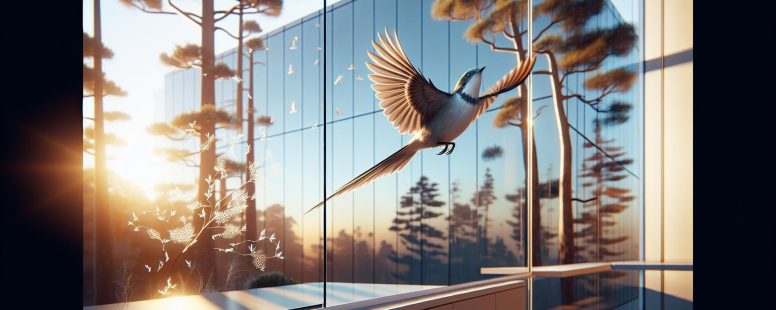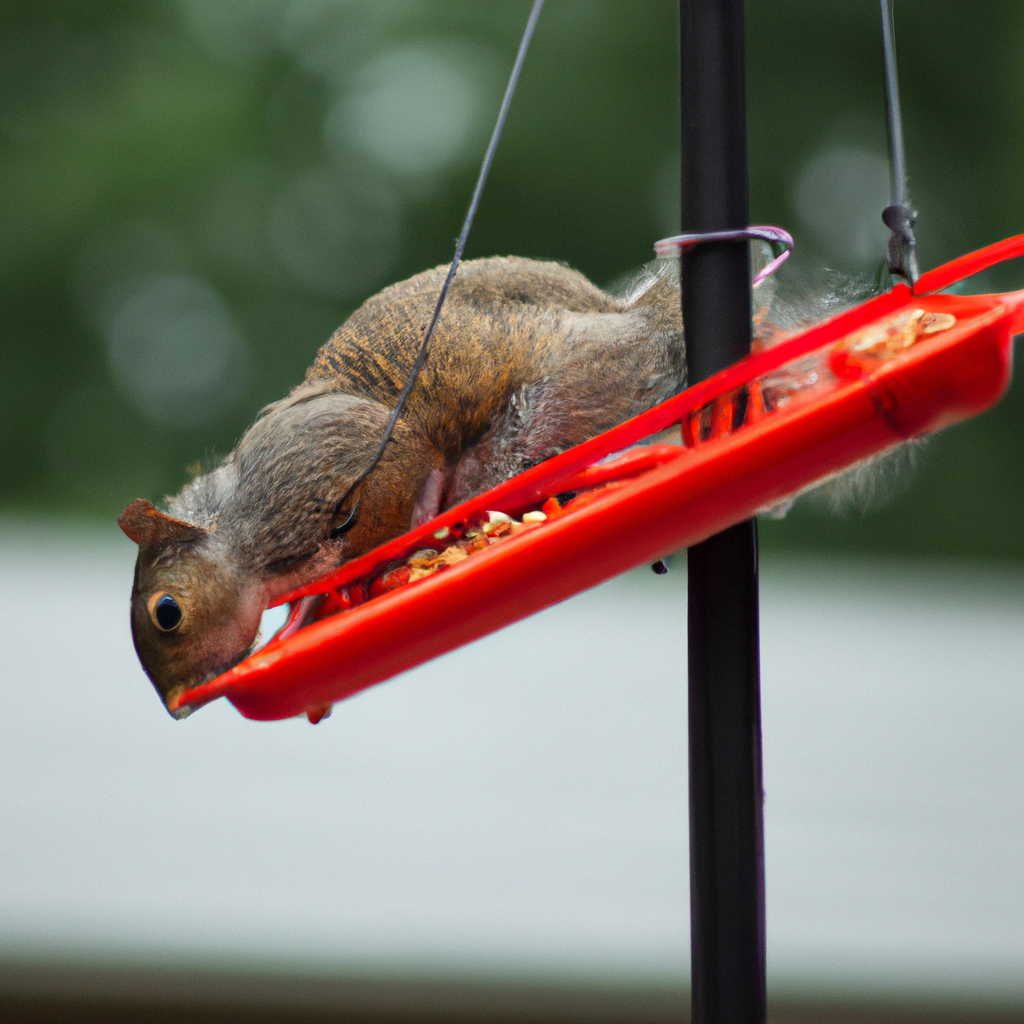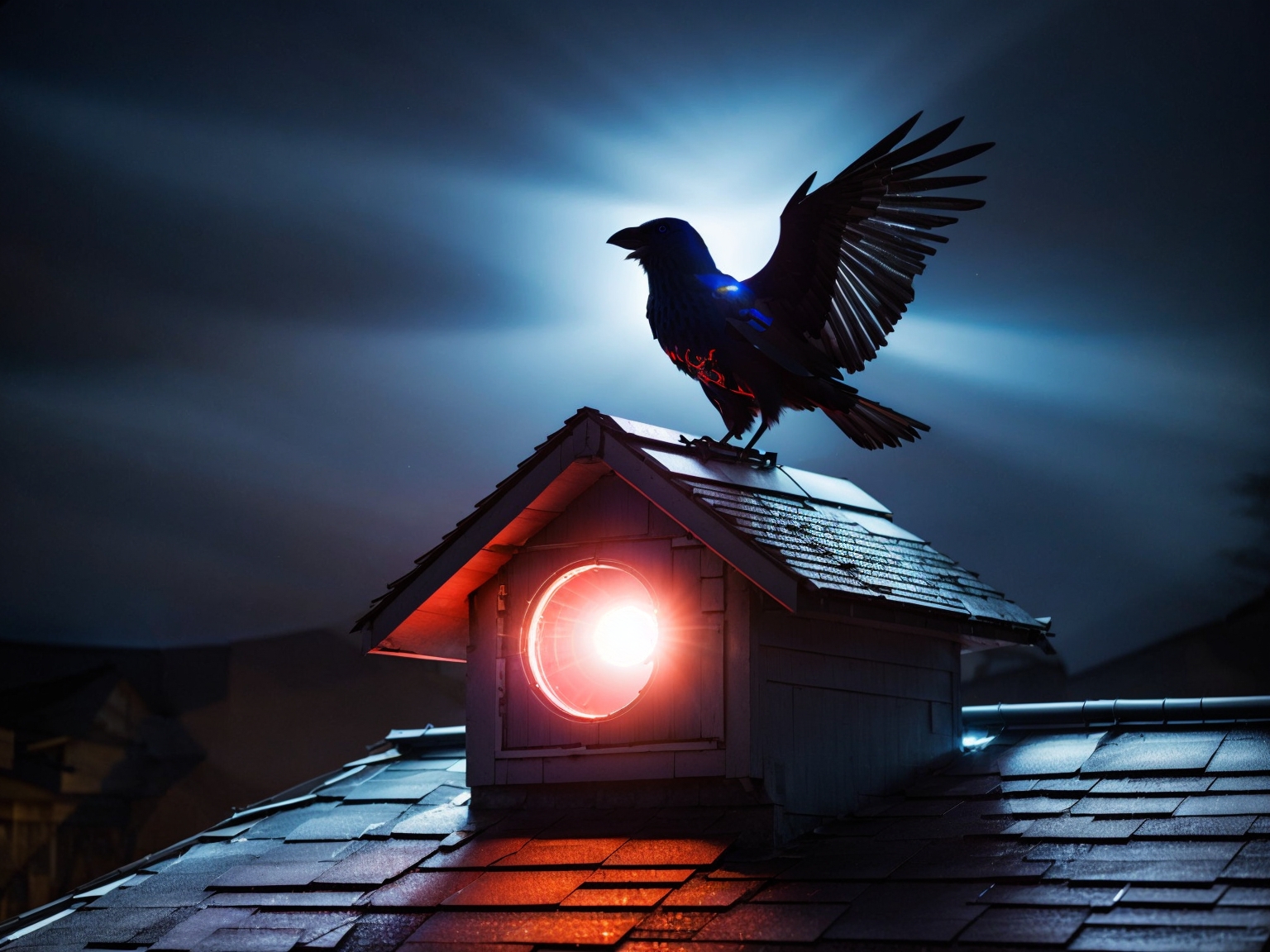Understanding Why Birds Can’t See Glass: Risks & Prevention
Ever wondered why birds keep colliding with your windows? It’s a heartbreaking reality that stems from a simple fact: birds can’t see glass. Their world doesn’t include the concept of clear barriers, leading to fatal misunderstandings with our modern architecture.
Understanding the science behind their vision reveals why glass remains invisible to these feathered friends. It’s not just about transparency; it’s about reflection and a lack of visual cues that humans take for granted. Let’s delve into the reasons behind this phenomenon and what you can do to help.
The Science of Bird Vision
When trying to understand why birds fly into glass, it’s key to get a handle on how their vision works. Birds have a completely different visual experience than humans. While you can walk up to a window and recognize that there’s a barrier in front of you, birds don’t have this same recognition.
Their eyes are located on the sides of their heads, providing a wide field of view. This feature is perfect for spotting predators and prey, but it also means their depth perception isn’t akin to yours. Birds are tuned to see the world in motion, and still objects can often seem invisible to them.
Birds have more types of cone cells in their eyes, which grants them the ability to see a broader spectrum of light, including ultraviolet. This might sound like it should help them avoid glass, but it often doesn’t. The extra light spectra add to the complexity when the light reflects off glass or passes through it. This sometimes enhances the reflections of the sky or surrounding vegetation that can trick a bird into seeing open space instead of a solid barrier.
Take note of how the time of day affects light and reflections. During dawn and dusk, the angle of the light alters reflections on glass. For birds, these are crucial foraging and social times, increasing the risk of window collisions. Here’s a breakdown:
| Time of Day | Risk Level |
|---|---|
| Dawn | High |
| Midday | Moderate |
| Dusk | High |
Different species of birds may also respond differently to glass, as they don’t all have the same vision capabilities. Some might be more prone to accidents due to the way their visual field is laid out. Consider the variable vision among these common birds:
- Robins: renowned for their expansive visual field.
- Hawks: optimized for acute frontal vision.
- Hummingbirds: excellent motion detection but may struggle with clear static obstacles.
By understanding these vision differences, you’ll gain insight into the challenges birds face with glass. This helps unravel the mystery and sets the stage for discussing effective solutions to protect our feathered friends.
Why Birds Can’t See Glass

Glass poses a problem for birds that’s both perplexing and dangerous. Despite their keen vision, birds often fail to perceive glass as a solid object, and here’s why. Birds don’t process reflections in the same way you do. What looks like open sky or a continuation of their habitat to them is, in reality, a clear and polished surface – an invisible barrier they can’t detect until it’s too late.
Current scientific insights suggest that birds’ eyes, which are adept at spotting predators and prey, aren’t wired to detect smooth, transparent surfaces. Additionally, glass is a human-made material, something birds haven’t evolved to navigate around. Their environment simply never demanded it.
The visual cues birds rely on don’t align with the properties of glass. They can’t fathom the concept of transparency which leads to the unfortunate reality that glass windows are like traps set in their flight paths. Surfaces that reflect the sky or vegetation create mirages that deceive birds, leading them to believe they’re headed towards open space.
You might find it interesting that birds’ visual spectrum includes ultraviolet light. It’s a feature that helps them in many aspects of survival and communication but offers no advantage when encountering glass. There’s ongoing research aimed at making glass more bird-friendly by incorporating visual patterns only birds can see or by altering the surface texture to break up reflections.
In densely populated urban areas, where natural spaces are intertwined with human constructions, these glass encounters are a daily hazard for birds. Steps to mitigate these risks include employing strategies like placing decals on windows or using special glass that appears opaque to birds while remaining clear to human eyes.
Timing plays a critical role in these incidents, too. Migration seasons and daily routines mean that high-risk times for bird collisions have been documented. By understanding these patterns, conservation efforts can be more effectively timed and targeted to protect our feathered friends.
So as you gaze through your windows or admire modern architecture, spare a thought for the birds. Their struggle with glass is one of the many challenges wildlife faces in an ever-changing human-dominated landscape. Simple measures can make a big difference in ensuring they navigate safely through their world – and ours.
The Role of Reflection

Imagine walking through a world where mirrors float invisibly in front of you. For birds, this isn’t fantasy; it’s the risky reality of glass. Reflection plays a tricky role in a bird’s perception of its environment. When you see your reflection, you recognize it’s not another room beyond the glass, but birds don’t have this same understanding. This misconception is largely why birds can’t see glass.
Smooth glass surfaces reflect the sky and surrounding foliage, creating a convincing illusion of continuous space for birds. From their viewpoint, what might be your living room window is just an open path to fly through.
Reflection isn’t the only issue, though. Birds take cues from movement and light but glass can carry these deceitfully. In daylight, the sun’s glare on windows masks its solidness, further convincing birds that there’s clear airspace ahead. At night, indoor lights attract birds, confusing their natural navigation.
Not all reflections are identical for birds. Surfaces like calm water are recognized by birds as a barrier, mostly because of the context—birds expect water at ground level, not floating in mid-air. But they rarely encounter natural vertical mirrors, making glass windows an unexpected and puzzling obstacle.
Why does this matter for you? Well, aside from the heartache of finding a bird that’s met your window, there’s a broader environmental impact to consider. Collisions with glass are among the top human-related causes of bird deaths every year.
To tackle reflection-related incidents, many scientists and conservationists suggest simple adjustments. For instance, breaking up reflections using strategically placed stickers might seem a minor change but it goes a long way in saving our feathered friends. Meanwhile, designers are getting creative, producing glass with patterns or ultraviolet signals invisible to humans but clear as day to birds.
What can you do now? Temporarily, drawing blinds or, if feasible, soaping up windows during peak migration periods greatly reduces bird crashes. You can also support initiatives that push for bird-safe building designs. Together, these efforts contribute to cutting down on unfortunate encounters between birds and glass.
Lack of Visual Cues

Understanding why birds struggle with glass begins with their perception of the world. Unlike humans, birds don’t have the ability to recognize glass as a barrier. Reflections in the glass blend seamlessly with the environment, whether it’s the sky or nearby trees, tricking birds into thinking they have a clear path ahead.
Bird’s vision is quite different from yours. While you can pick up visual hints that signal the presence of a glass window, birds rely heavily on different cues. For them, the world is a mosaic of direct line of sight and peripheral vision components which frequently don’t include the subtle reflections or distortions that indicate a pane of glass.
Another part of the problem lies in how glass manages light. The reflective properties can sometimes mirror the surroundings so well that birds perceive an extension of their habitat. They may see open sky or a continuation of the foliage they were perusing moments ago. This error in judgment often leads to collisions as they attempt to fly through these illusory passages.
To compound the issue, during certain times of the day, light can either be absorbed or reflected by glass, making it appear virtually invisible. The lack of contrast or discernible patterns within the reflection does not provide birds with the necessary visual cues to gauge its presence.
Simple interventions could disrupt these fatal flights by altering the bird’s perception. Static visual signals, like decals or ultraviolet signals that are visible to birds but not to humans, can alert them of imminent obstacles. Fluctuating light patterns and strategic placement of indoor plants can also break up the continuity of reflections on the glass, helping winged creatures to navigate around rather than through the windows.
Safety for birds involves recognising that they need extra help to see and interpret the barriers that humans put up. The utilization of bird-friendly designs emerges as a key step in adapting human-made structures to the natural world. Reducing these risks starts with acknowledging the absence of visual cues that are inherent to birds and making the necessary adjustments to your home or office windows.
Ways to Help Birds Avoid Collisions

Birds and glass can be a deadly combination. You can play a vital role in reducing the number of feathered casualties by taking a few simple steps to make your windows more visible to our avian friends. Here’s what you can do to help decrease the chances of bird collisions:
Use Visual Markers
Visual markers on glass alert birds to the presence of a barrier. These can take various forms:
- Decals: Apply stickers shaped like birds of prey or geometric patterns on your windows. Space them closely enough so birds won’t attempt to fly between them.
- Window films: These work on the outside surface of glass, reducing reflectivity and making the pane more apparent.
Maintain Natural Covers
Keep natural foliage around your building as it not only provides habitat but also helps birds recognize the presence of a structure. Pruning should be done sparingly to avoid creating gaps that make windows look like pass-throughs.
Advancements in Glass Technology
Research and invest in the latest bird-friendly glass designs. Innovations in glass manufacturing have produced products with patterns visible to birds but not to humans, reducing impact without compromising aesthetics.
Lighting Considerations
During migration, nocturnal lights can disorient birds, leading to collisions. You can:
- Reduce exterior lighting: Trim down any unnecessary outdoor lights during migration season.
- Use motion sensors and timers: These minimize the duration and intensity of artificial lighting.
| Action | Benefit |
|---|---|
| Apply Visual Markers | Makes glass surfaces identifiable |
| Maintain Natural Cover | Reduces mistaken fly-through spaces |
| Invest in Bird-Friendly Glass | Prevents collisions without harming view |
| Manage Outdoor Lighting | Decreases disorientation during migration |
Taking these steps doesn’t just save birds; it also contributes to biodiversity and the health of your local ecosystem. Your actions have a ripple effect that extends far beyond your own backyard. By starting with your windows, you’re taking an active role in protecting the diverse species that grace our skies.
Conclusion
You’ve seen the risks glass poses to birds and the steps you can take to mitigate them. By implementing simple measures like decals or window films you’re not only safeguarding our feathered friends but also contributing to the larger picture of ecosystem health. Remember, each action you take, whether it’s maintaining natural covers or opting for bird-friendly glass, makes a significant impact. Let’s work together to ensure birds can navigate our shared environment safely. Your efforts are a vital part of preserving biodiversity and promoting a balance between human-made structures and wildlife.
- Top Handmade Backyard Decorations for Holidays: Creative DIY Ideas to Brighten Your Outdoors - October 8, 2025
- Creating Stepping Stones with Kids: A Fun Backyard Project for Family Bonding and Creativity - October 8, 2025
- When Is Honey Harvesting Season in the US? A Complete Guide for Beekeepers - October 8, 2025




